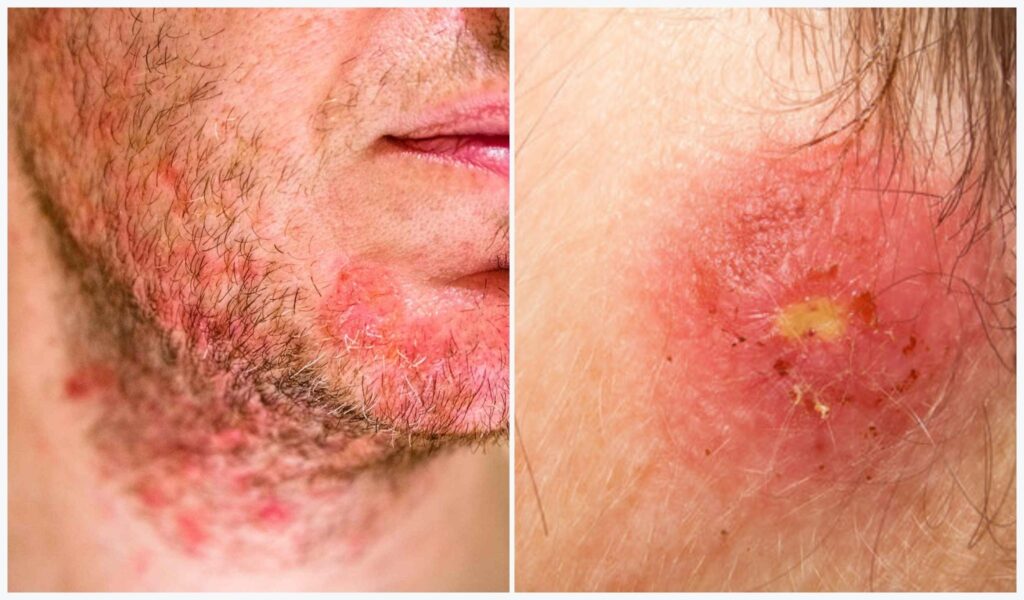Bacterial infections are illnesses caused by the invasion and growth of harmful bacteria in the body. These infections can affect various parts of the body, ranging from the skin to internal organs. While many bacteria are harmless or beneficial, pathogenic bacteria can cause severe health problems if not treated promptly.

Causes of Bacterial Infections
Bacterial infections occur when harmful bacteria breach the body’s natural defenses and multiply uncontrollably. This can happen through:
- Contact with Contaminated Surfaces: Touching surfaces harboring bacteria.
- Ingestion of Contaminated Food or Water: Consuming food or drinks contaminated with pathogenic bacteria like Salmonella or Escherichia coli (E. coli).
- Direct Contact with Infected Individuals: Transmission through skin-to-skin contact, respiratory droplets, or bodily fluids.
- Compromised Immune System: Conditions that weaken immunity make the body more susceptible to bacterial infections.
Common Types of Bacterial Infections
- Skin Infections: Examples include cellulitis, impetigo, and boils.
- Respiratory Infections: Conditions like pneumonia, bronchitis, and tuberculosis.
- Urinary Tract Infections (UTIs): Often caused by E. coli.
- Gastrointestinal Infections: Food poisoning and gastritis.
- Systemic Infections: Sepsis or bloodstream infections, which can be life-threatening.
Symptoms of Bacterial Infections
The symptoms of bacterial infections vary depending on the affected area but may include:
- General Symptoms: Fever, fatigue, and chills.
- Skin Infections: Redness, swelling, warmth, and pus.
- Respiratory Infections: Cough, shortness of breath, and chest pain.
- Urinary Infections: Painful urination, frequent urination, and cloudy urine.
- Gastrointestinal Infections: Nausea, vomiting, diarrhea, and abdominal pain.
Diagnosing Bacterial Infections
Diagnosis typically involves:
- Physical Examination: Assessing visible signs and symptoms.
- Laboratory Tests: Blood tests, urine tests, or cultures to identify the bacteria.
- Imaging Tests: X-rays, CT scans, or MRIs to detect internal infections.
Treatments for Bacterial Infections
Antibiotic Therapy
Antibiotics are the primary treatment for bacterial infections. They work by killing bacteria or inhibiting their growth. Common antibiotics include penicillin, amoxicillin, and ciprofloxacin. It is crucial to complete the prescribed course to prevent antibiotic resistance.
Supportive Care
- Rest and hydration to support recovery.
- Pain relievers and anti-inflammatory medications for symptom management.
Advanced Treatments on bacterial infection
- Hospitalization for severe infections.
- Intravenous (IV) antibiotics for systemic infections.
Preventing Bacterial Infections
Preventative measures include:
- Proper Hygiene: Washing hands regularly with soap and water.
- Safe Food Practices: Cooking food thoroughly and avoiding cross-contamination.
- Vaccinations: Immunizations against bacterial infections like tetanus, diphtheria, and whooping cough.
- Avoiding Close Contact: Staying away from individuals showing symptoms of bacterial illnesses.
Complications of Untreated Infections
If left untreated, bacterial infections can lead to:
- Chronic illness or tissue damage.
- Spread to other parts of the body, causing systemic infections.
- Development of antibiotic-resistant strains.